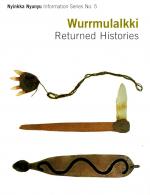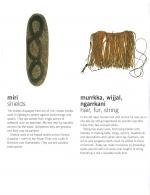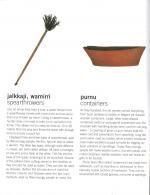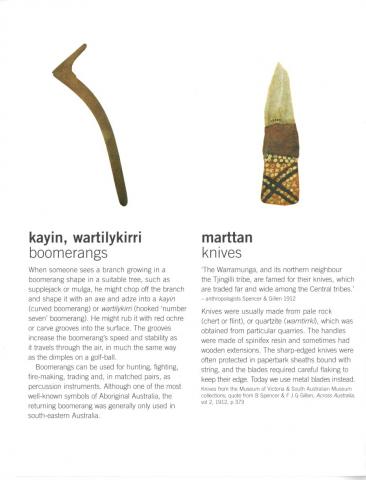Wurrmulalkki: Returned Histories (page 6)
kayin, wartilykirri (boomerangs)
When someone sees a branch growing in a boomerang shape in a suitable tree, such as supplejack or mulga, he might chop off the branch and shape it with an axe and adze into a kayin (curved boomerang) or wartilykirri (hooked 'number seven' boomerang). He might rub it with red ochre or carve grooves into the surface. The grooves increase the boomerang's speed and stability as it travels through the air, in much the same way as the dimples on a golf-ball. Boomerangs can be used for hunting, fighting, fire-making, trading and, in matched pairs, as percussion instruments. Although one of the most well-known symbols of Aboriginal Australia, the returning boomerang was generally only used in south-eastern Australia.
marttan (knives)
'The Warramunga, and its northern neighbour the Tjingilli tribe, are famed for their knives, which are traded far and wide among the Central tribes.' Knives were usually made from pale rock (chert or flint), or quartsize (warntirrki), which was obtained from particular quarries. The handles were made of spinifex resin and sometimes had wooden extensions. The sharp-edged knives were often protected in paperbark sheaths bound with string, and the blades required careful flaking to keep their edge. Today we use metal blades instead.
Anthropologists Spencer and Gillen 1912/Museum of Victoria & South Australia Museum collections; quote from B. Spencer & F. J. G. Gillen, Across Australia, vol 2, 1912, p. 373








